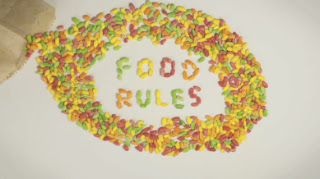Widespread degradation and deepening scarcity of land and water
resources have placed a number of key food production systems around the globe
at risk, posing a profound challenge to the task of feeding a world population
expected to reach 9 billion people by 2050, according to the new FAO report on the State of the World's Land and Water Resources for Food and Agriculture (SOLAW) published in January 2012.
The report noted that although there was a three-fold increase in food
production in the last 50 years, most areas achieving these results relied on “management
practices that have degraded the land and water systems upon which food
production depends.” A number of
these systems/ areas now face the risk of a “progressive breakdown of their
productive capacity under a combination of excessive demographic pressure and
unsustainable agriculture use and practices”. Combined with the complications
brought on by climate change, these systems at risk may simply not be able to
contribute as expected in meeting human demands by 2050.
This risk is now affecting all regions around the globe and, as natural
resource bottlenecks are increasingly felt, competition for land and water will
become “pervasive” – not only between urban and industrial users, but within
the agricultural sector as well– between livestock, staple crops, non-food
crop, and biofuel production. The
challenge of providing sufficient food for an ever-more hungry planet,
especially in developing countries, where quality land, soil nutrients and
water are least abundant has never been more difficult.
“Worldwide, the poorest have the least access to land and water and are locked in a poverty trap of small farms with poor quality soils and high vulnerability to land degradation and climactic uncertainty,” it notes.
Over 40 percent of the world’s degraded lands are found in areas with high poverty rates. However, degradation is a risk across all income groups, 30% of the world’s degraded lands are in areas with moderate levels of poverty while 20% are in areas with low poverty rates.
The report centers on concern for the increasing imbalance between
availability and demand for land and water resources at the local and national
levels. The number of areas reaching the limits of their production capacity is
fast increasing, the report warns. SOLAW also provides for the first time ever
a global assessment of the state of the planet’s land resources: 25 percent of
the earth’s lands are highly degraded and another 8 percent are moderately
degraded, and only10 percent are ranked as “improving.” Further more, water scarcity is growing and salinization and pollution
of groundwater and degradation of water bodies and water-related ecosystems are
rising. “Because of the dependence of many key food production systems on
groundwater, declining aquifer levels and continued abstraction of
non-renewable groundwater present a growing risk to local and global food
production,” SOLAW warns.
The report makes the following recommendations:
· · Improving the efficiency of
water use by agriculture. Most irrigation systems across the world perform
below their capacity. A combination of improved irrigation scheme management,
investment in local knowledge and modern technology, knowledge development and
training can increase water-use efficiency
· · Encourage innovative farming
practices such as conservation agriculture, agro-forestry, integrated
crop-livestock systems and integrated irrigation-aquaculture systems which hold
the promise of expanding production efficiently to address food security and
poverty while limiting impacts on ecosystems
· · Increasing investment in
agricultural development. Gross investment requirements between 2007 and 2050
for irrigation water management in developing countries are estimated at almost
$1 trillion. Land protection and development, soil conservation and flood
control will require around $160 billion worth of investment in the same period
· · Greater support for ensuring
that national policies and institutions are modernized, collaborate
together and are better equipped to cope with today’s emerging challenges of
water and land resource management.
Throughout the SOLAW report there are multiple examples of successful
actions undertaken across the globe that illustrate a multiplicity of available
options that are potentially replicable elsewhere. Inevitably stakeholders will
need to evaluate trade-offs among a variety of environmental goods and services,
but the highly differentiated options highlighted provide a good start for
matching options with local experience and knowledge.
You can read the executive summary here

